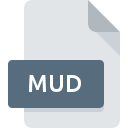.MUD File Extension

Mudbox 3D Scene File
| Developer | Autodesk |
| Popularity | |
| Category | 3D Image Files |
| Format | .MUD |
| Cross Platform | Update Soon |
What is an MUD file?
The .MUD file extension is associated with Autodesk Mudbox, a digital sculpting and painting software. These files are used to store 3D scene data, including models, textures, lighting, and other scene elements created within Mudbox. The .MUD file format is essential for saving and sharing detailed 3D artwork and projects among digital artists and studios.
More Information.
Mudbox was created to provide artists with intuitive and powerful tools for digital sculpting and texture painting, aiming to replicate the feel of traditional sculpting in a digital environment. The .MUD file format was designed to encapsulate the various elements of a 3D scene, allowing artists to save their work in a single, comprehensive file.
Origin Of This File.
The .MUD file format was introduced by Autodesk as part of the Mudbox software. Mudbox was initially developed by Skymatter, a company founded by former Weta Digital artists. Autodesk acquired Skymatter in 2007, integrating Mudbox into its suite of 3D modeling and animation tools.
File Structure Technical Specification.
The .MUD file format is a proprietary format used exclusively by Autodesk Mudbox. While the exact technical specifications are not publicly detailed due to its proprietary nature, a .MUD file typically contains:
- 3D Models: High-resolution mesh data including vertices, edges, and polygons.
- Textures: Image maps for surface detailing, including diffuse, bump, normal, and specular maps.
- Layers: Sculpting and painting layers allowing for non-destructive editing.
- Materials: Information about the materials applied to 3D models, including shaders and properties.
- Lighting and Scene Data: Information about the scene’s lighting and camera setup.
How to Convert the File?
Windows
- Install Autodesk Mudbox:
- Download and install Autodesk Mudbox from the Autodesk website.
- Open the .MUD File:
- Launch Mudbox and use “File” > “Open” to load the .MUD file.
- Export the File:
- Go to “File” > “Export Selection” or “Export All.”
- Select the desired format (e.g., .OBJ, .FBX).
- Save the Converted File:
- Choose the destination folder and save the file.
Linux
- Use a Windows Virtual Machine:
- Set up a Windows VM using software like VirtualBox or VMware.
- Install Mudbox within the VM.
- Open and Export:
- Follow the steps outlined for Windows to open and convert the .MUD file.
Alternatively:
- Use Wine (Not Officially Supported):
- Install Wine.
- Attempt to run the Mudbox installer using Wine.
- If successful, follow the Windows steps to open and convert the file. Note that this method is not guaranteed to work reliably.
macOS
- Install Autodesk Mudbox:
- Download and install Mudbox from the Autodesk website.
- Open the .MUD File:
- Launch Mudbox and use “File” > “Open” to load the .MUD file.
- Export the File:
- Go to “File” > “Export Selection” or “Export All.”
- Select the desired format (e.g., .OBJ, .FBX).
- Save the Converted File:
- Choose the destination folder and save the file.
Android
Mudbox is not available for Android. To convert .MUD files:
- Remote Desktop App:
- Use a remote desktop app to access a computer running Mudbox.
- Perform the conversion on the remote computer following the Windows or macOS steps.
iOS
Similar to Android, Mudbox is not available for iOS. To convert .MUD files:
- Remote Desktop App:
- Use a remote desktop app to access a computer running Mudbox.
- Perform the conversion on the remote computer following the Windows or macOS steps.
Other Platforms
For other platforms, the following methods can be considered:
- Online Conversion Services:
- Use online services to upload and convert .MUD files to formats like .OBJ or .FBX. Be aware of potential file size limitations and privacy concerns.
Examples of online conversion services:
- Cloud-Based 3D Modeling Services:
- Some cloud-based 3D modeling and rendering services may support .MUD files and allow for conversion to other formats. Check the specific capabilities of the service you choose.
Advantages And Disadvantages.
Advantages:
- Integrated Workflow: Allows for a seamless sculpting and painting experience within Mudbox.
- High Detail: Capable of storing high-resolution mesh and texture data.
- Layer Support: Supports multiple layers for non-destructive editing.
- Interoperability: Works well with other Autodesk products, enhancing pipeline efficiency.
Disadvantages:
- Proprietary Format: Limited to Autodesk Mudbox, restricting flexibility with other software.
- File Size: Can be large due to the high-resolution data, requiring substantial storage space.
- Software Dependency: Requires Mudbox for full access to all features and data.
How to Open MUD?
Open In Windows
- Install Autodesk Mudbox:
- Download and install Mudbox from the Autodesk website.
- Open the .MUD File:
- Launch Mudbox.
- Use “File” > “Open” to load the .MUD file.
Open In Linux
- Use a Windows VM:
- Install a Windows virtual machine and run Mudbox within the VM.
- Wine:
- Some users might attempt to run Mudbox via Wine, though this is not officially supported and may not be reliable.
Open In MAC
- Install Autodesk Mudbox:
- Download and install Mudbox from the Autodesk website.
- Open the .MUD File:
- Launch Mudbox.
- Use “File” > “Open” to load the .MUD file.
Open In Android
- Remote Desktop:
- Use a remote desktop app to access a computer running Mudbox.
- Third-Party Viewers:
- Use a third-party app that supports viewing of 3D models (if they support .MUD files).
Open In IOS
- Remote Desktop:
- Use a remote desktop app to access a computer running Mudbox.
- Third-Party Viewers:
- Use a third-party app that supports viewing of 3D models (if they support .MUD files).
Open in Others
- Online Conversion Services:
- Use online services to convert .MUD files to more universally supported formats (e.g., .OBJ or .FBX).
- Cloud-Based Solutions:
- Some cloud-based 3D modeling services might allow viewing or converting .MUD files through their platforms.












